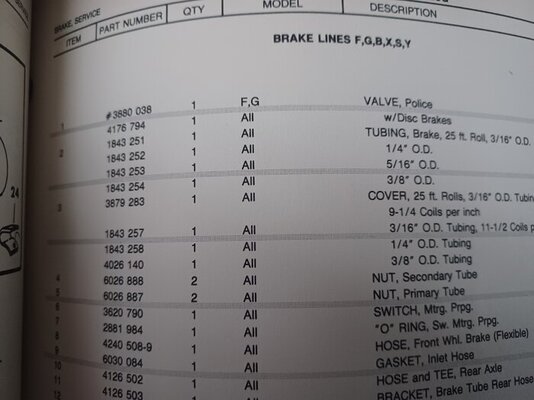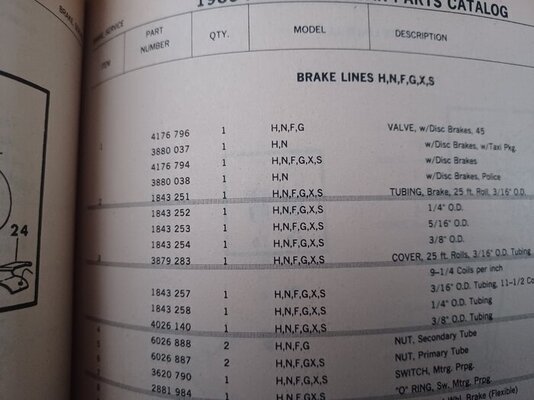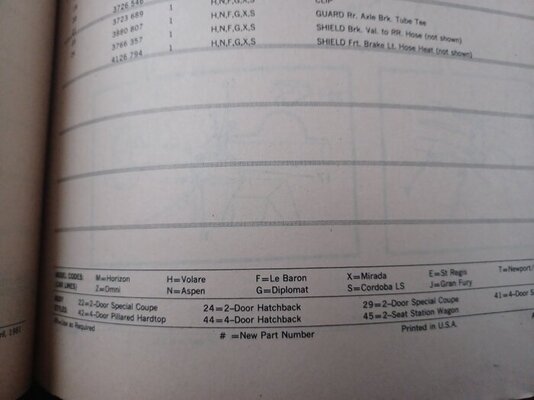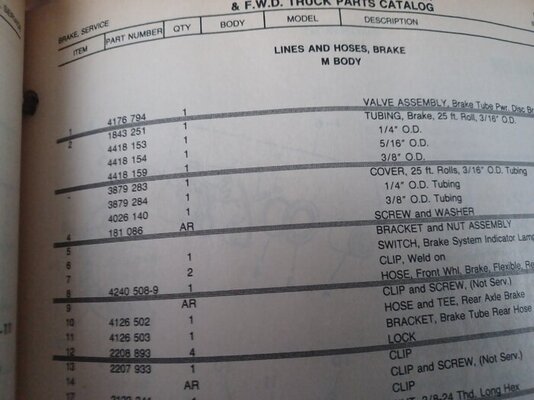MY3033
Active Member
This thread will be for me to document progress I make at putting my Aspen back on the road after sitting since 1994.
For those of you who didn’t see my Aspen when I joined the board let me catch you up to speed. 76 Aspen Custom Coupe. Power steering, power brake, cruise, ac, fender turn signals, fold down rear seat, light package, and CA emissions. All that on top of being an early build (11/75). Parked in 94 after being “messed with” due to being part of a marital affair, reference my welcome wagon thread for that story.
Anyway, finally got some work done on it. Full ignition system tune up, rebuilt the BBD carb, fresh fluids, and messed with the brakes.
I put new shoes and hardware in the rear along with new wheel cylinders. The old shoes were paper thin, probably original from 76. The front brakes actually seemed to be in great shape. I bought new pads and calipers in case, but the old pads have MORE material than the brand new ones, so I left them alone.
Replaced the master cylinder as is was seized up. Bench bled and installed. I fought the bleeding process all day, but didn’t really get anywhere. I have good pedal feel, but only get fluid to the driver front. All three other are dry. Am I missing something? I’m not even getting any fluid to the others. Is it something with that junction right below the master? I’ve never had just one wheel be able to get bled. I put all new rubber hoses on as well. There was brake fluid at both rears when I removed the old wheel cylinders, so am i maybe fighting clogged steel lines? I’m a wits end with that debacle…
Anyway, I was able to confirm all the electrical seems to work, interior and exterior! I also decided to hand buff and was the paint (or what’s left of it), and it actually shines pretty good. I even go into the trunk and found all the original jack and tools, as well as the owners manual and the original plastic battery cover (never seen on that was still in one piece until today!)
Also figured i should mention how SOLID this car is underneath, frame rails look new and there is still lots of undercoating left and no soft areas. I’m really starting to like this car, now if i could only get it running long enough to drive it. I probably won’t drive it this year or even until next summer. Winter is showing its teeth now, and I don’t want to work outside.
Things I noticed: this thing had good maintenance in until it got parked. The carb definitely had been rebuilt soon before it got parked, hell it looked new inside. Even the accelerator pump was good. Front brakes were also done right before, as well as it had fresh oil in it. I found the mileage written on the old filter, only about 40 miles before it got parked, and with how clean the oil was, I believe it. Air filter had the same mileage, but didn’t fare well over 30 years. It also appears all the steel fuel lines were done prior to being parked. That guy took good care of this Aspen, and I will too. Not many of us young guns that appreciate stuff like this.









For those of you who didn’t see my Aspen when I joined the board let me catch you up to speed. 76 Aspen Custom Coupe. Power steering, power brake, cruise, ac, fender turn signals, fold down rear seat, light package, and CA emissions. All that on top of being an early build (11/75). Parked in 94 after being “messed with” due to being part of a marital affair, reference my welcome wagon thread for that story.
Anyway, finally got some work done on it. Full ignition system tune up, rebuilt the BBD carb, fresh fluids, and messed with the brakes.
I put new shoes and hardware in the rear along with new wheel cylinders. The old shoes were paper thin, probably original from 76. The front brakes actually seemed to be in great shape. I bought new pads and calipers in case, but the old pads have MORE material than the brand new ones, so I left them alone.
Replaced the master cylinder as is was seized up. Bench bled and installed. I fought the bleeding process all day, but didn’t really get anywhere. I have good pedal feel, but only get fluid to the driver front. All three other are dry. Am I missing something? I’m not even getting any fluid to the others. Is it something with that junction right below the master? I’ve never had just one wheel be able to get bled. I put all new rubber hoses on as well. There was brake fluid at both rears when I removed the old wheel cylinders, so am i maybe fighting clogged steel lines? I’m a wits end with that debacle…
Anyway, I was able to confirm all the electrical seems to work, interior and exterior! I also decided to hand buff and was the paint (or what’s left of it), and it actually shines pretty good. I even go into the trunk and found all the original jack and tools, as well as the owners manual and the original plastic battery cover (never seen on that was still in one piece until today!)
Also figured i should mention how SOLID this car is underneath, frame rails look new and there is still lots of undercoating left and no soft areas. I’m really starting to like this car, now if i could only get it running long enough to drive it. I probably won’t drive it this year or even until next summer. Winter is showing its teeth now, and I don’t want to work outside.
Things I noticed: this thing had good maintenance in until it got parked. The carb definitely had been rebuilt soon before it got parked, hell it looked new inside. Even the accelerator pump was good. Front brakes were also done right before, as well as it had fresh oil in it. I found the mileage written on the old filter, only about 40 miles before it got parked, and with how clean the oil was, I believe it. Air filter had the same mileage, but didn’t fare well over 30 years. It also appears all the steel fuel lines were done prior to being parked. That guy took good care of this Aspen, and I will too. Not many of us young guns that appreciate stuff like this.




















